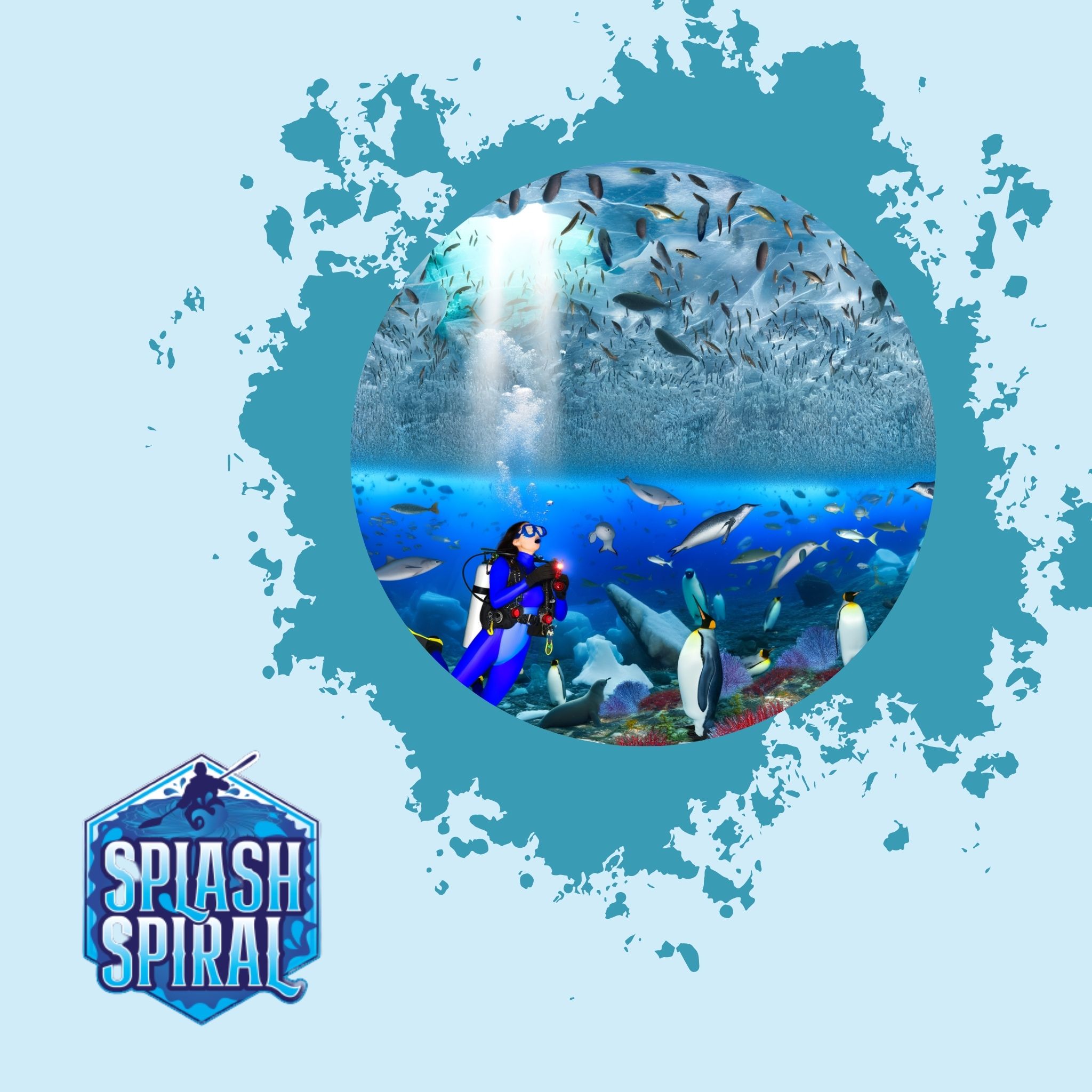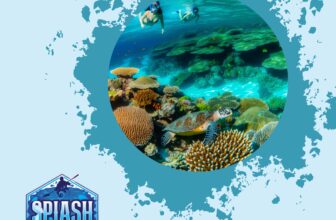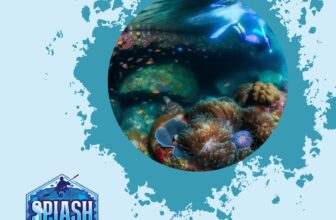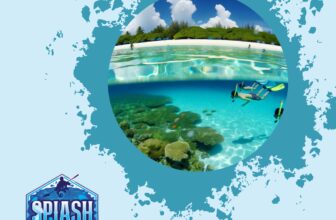
Diving under sea ice is a jaw-dropping experience, crammed with unique challenges and extraordinary rewards. Whether you're a beginner diver or someone looking to take their skills to the next (colder) level, understanding what makes sea ice ecosystem diving so special is the first step. This guide is aimed at those intrigued by the prospect of polar diving and focuses on the amazing environments you can explore, the marine biodiversity you'll encounter, and the conservation challenges these habitats face.
Introduction
Sea ice ecosystem diving is an exhilarating type of diving that takes place in the polar regions under sheets of sea ice. If you've ever daydreamed about diving into an utterly unique and otherworldly environment, this is your ticket. What sets sea ice diving apart is not just the breathtaking underwater landscape but also the intense challenges that come with it. Imagine breathtaking ice formations silhouetted against a dim, filtered light, with the promise of encountering marine life that evolved to thrive in such extreme conditions.
But diving under sea ice isn't all dreamy vistas and photo ops. It demands a steelier mindset and specialized skills, incorporating factors like biting cold, limited visibility, and the need for specialized gear. Whether you’re dipping your toes into diving for the first time or you’re already a certified diver aiming to push your limits, sea ice diving offers rewards as vast as the polar seas themselves. The experience is both humbling and awe-inspiring—it's truly diving in the rawest form.
Beginner divers might find the concept daunting, but that's part of the allure. This adventure calls for patience, careful preparation, and a willingness to embrace and overcome nature's toughest elements. In return, divers are treated to a spectacle of marine biodiversity and surreal vistas unlike anything else on this planet. The cool (literally and figuratively) part? Once you dive here, every other dive feels like a walk in the park.
The Magic of Sea Ice Ecosystems
Sea ice habitats, simply put, are areas where the ocean's surface is covered by ice, creating a distinctive environment both above and below the water. These ecosystems come to life in the polar regions, where the ice isn't just a cap on the ocean but a crucial part of the marine world. Think of it as a floating city, providing shelter, breeding grounds, and hunting territories for a variety of marine creatures.
What makes these ice habitats particularly enchanting is their role in supporting marine biodiversity. The ice acts like a blanket, impacting everything from water temperature to nutrient cycles. Underneath this frozen crust lives a complex and thriving ecosystem, formed by a multitude of organisms that have adapted in fascinating ways to survive and flourish in extreme conditions.
When diving under sea ice, you'll likely encounter an array of species that are rarely seen elsewhere. Notable among them are the ice algae, microorganisms that form the base of the food web. These tiny but mighty algae cling to the underside of the ice and are indispensable for the survival of other marine life forms. As the primary producers, they feed zooplankton, which in turn become prey for larger species like fish, seals, and even the majestic polar bears who venture onto the ice.
Another marvel of these icy waters is the presence of stunningly resilient creatures like the Antarctic cod or the Arctic jellyfish, which survive and thrive in the frigid temperatures thanks to some amazing biological adaptations. For instance, the antifreeze proteins found in the blood of fish like the Antarctic toothfish prevent their bodily fluids from freezing in sub-zero temperatures. These adaptations allow you to witness a mode of life so radically different from the more temperate diving spots.
Exploring sea ice ecosystems isn't just about the thrill of diving in an extraordinary environment. It's an opportunity to witness a fragile habitat that's vital to our planet’s health. These icy habitats play a crucial role in regulating global climate patterns and supporting marine biodiversity that influences the health of our oceans at large. So, strap on your gear, take the plunge, and prepare to be awestruck by a world where every dive is a testament to nature's resilience and ingenuity.
Polar Diving: An Unforgettable Adventure
Diving in polar regions is unlike any other diving experience. The stark beauty of the ice above and the vibrant life below create a dichotomy that's both thrilling and serene. When you drop into frigid waters flanked by massive ice floes, you step into a world that's almost otherworldly.
Unique Challenges of Polar Diving
First off, you have to contend with extreme temperatures. The icy waters can plunge to a bone-chilling -2°C (28°F), requiring specialized gear such as dry suits, insulated undergarments, and thick gloves to keep you warm. Handling this gear and adapting to the bulkiness can be challenging, but it's a necessary part of the adventure.
Another unique challenge is the need for precise planning and risk management. Polar regions are remote and often have limited access to emergency services. This means dives are meticulously planned, with contingencies for unexpected events. Communication and teamwork are crucial; this is not a solo endeavor.
Gear Requirements
Specialized equipment is essential for polar diving. In addition to the dry suits and heavy insulation, divers use full-face masks to protect against the icy water. Regulators must be top-quality, designed to function efficiently even when submerged in freezing conditions to prevent free-flowing due to ice formation. Knowing how to operate and maintain this gear is crucial—consider it part of the fascinating learning curve.
Why Beginners Might Find This Rewarding
For beginners, the idea of polar diving might sound like biting off more than they can chew. But the rewards are immense. The polar regions offer some of the clearest waters you'll ever dive in, which means unparalleled visibility. Imagine floating in clear, blue-tinged water, with light filtering through the ice, creating an ethereal underwater aurora that illuminates the ocean floor.
Beyond the visuals, there's a profound sense of accomplishment that comes with mastering the complexities of polar diving. It rapidly builds your skills and resilience as a diver, forcing you to stay calm and think critically even in challenging conditions. The serene beauty and the sheer diversity of marine life make every effort worthwhile. Imagine encountering creatures like seals, penguins, or the elusive polar bear, all in their natural, icy habitat.
Taking the plunge beneath the polar ice isn't just another dive; it’s an unforgettable adventure that hones your abilities while offering unparalleled beauty and serenity. And for those just starting out, it forms the beginning of a lifelong journey into one of the planet's most stunning frontiers.
Marine Biodiversity Under the Ice
Diving into a sea ice ecosystem is like stepping into an underwater Narnia. Imagine a shimmering ceiling made of frozen water, filtering sunlight into an otherworldly blue glow. Below the ice, a remarkable realm thrives, teeming with life uniquely adapted to its frigid environment.
Describing a Typical Sea Ice Ecosystem
A typical sea ice ecosystem is anchored by the ice itself. The underside of ice floes creates a complex and stable platform where life can flourish despite the freezing conditions. These ice surfaces and the water below are a playground for a multitude of organisms, ranging from microscopic algae to larger marine mammals.
The water column beneath the ice is layered with cold, dense water hugging the seabed and slightly warmer waters rising nearer to the ice. This layering supports a diverse range of species from various trophic levels. You’ll find vibrant communities of plankton, which serve as the foundation for an entire food web, supporting the life forms that make these ecosystems so special.
Common and Unique Marine Species
The biodiversity under the ice is a mix of the common and the extraordinary. You'll encounter species like:
1. Phytoplankton and Algae: These form the base of the food chain, blooming in surprising abundance on the underside of the ice. The microscopic plants thrive in the cool, nutrient-rich waters, converting sunlight into energy and forming the diet for other organisms.
2. Fish: Species such as the Arctic cod have evolved to survive and prosper under icy ceilings, often sporting antifreeze proteins in their blood to avoid freezing.
3. Invertebrates: Starfish, sea urchins, and sponges are commonly found clinging to the underside of sea ice or crawling along the seabed.
4. Seals and Penguins: In the Southern Hemisphere, you might find seals like the Weddell seal or charming emperors of the ice, the penguins, darting gracefully through the water in search of fish and krill.
5. Larger Mammals: Polar bears in the Arctic or orcas in both polar regions add to the list of inhabitants, preying on these smaller species.
Adaptations to Extreme Conditions
Surviving in such extreme conditions requires remarkable adaptations. Many organisms possess unique traits to withstand low temperatures:
Antifreeze Proteins: Some fish and invertebrates produce special proteins that prevent their blood and bodily fluids from freezing, allowing them to thrive even in sub-zero temperatures.
Blubber and Thick Fur: Marine mammals like seals and polar bears have developed thick layers of blubber and dense fur to insulate against the biting cold.
Slower Metabolism: Several species under the ice demonstrate slower metabolic rates, which reduces their energy requirements and allows them to survive on limited food resources during the colder months when production of primary food sources can be minimal.
Under-Ice Algae: Algae living on the underside of the ice use minimal sunlight, filtered through thick ice layers, for photosynthesis, an impressive feat given the limited light intensity.
Understanding this web of life and the specialized adaptations required to thrive in such a challenging environment is not only fascinating but critical for appreciating the delicate balance sustaining these ecosystems. For beginner divers, exploring this unique, hidden world offers an unparalleled glimpse into nature’s ingenuity and resilience.
Conservation Challenges
When it comes to conservation challenges, sea ice habitats are on the front lines. The polar regions are facing dramatic changes due to climate change, and this has profound effects on the ecosystems hidden beneath the ice.
Impact of Climate Change
- Rapid Melting of Sea Ice: Rising global temperatures are causing ice to melt at unprecedented rates, drastically reducing the habitat available for the unique marine life that calls these regions home.
- Loss of Habitat: Species like polar bears and seals rely on ice for hunting and resting. The loss of ice impacts the entire food web, from tiny plankton to larger predators.
Ocean Acidification
- Increased Carbon Dioxide Absorption: As the ocean absorbs more carbon dioxide from the atmosphere, it becomes more acidic.
- Effects on Marine Life: This change in pH levels can affect the development and survival of marine species, particularly those that rely on calcium carbonate for their shells and skeletons, such as some types of plankton and shellfish.
Overfishing and Human Activity
- Depletion of Essential Species: Overfishing can deplete essential species and disrupt the delicate balance of these ecosystems.
- Industrial Activities: Increased tourism and industrial activities, such as oil and gas exploration, introduce pollution and create physical disturbances that can harm these fragile environments.
How Divers Can Help
As divers, you have a unique vantage point and the ability to contribute to conservation efforts.
Participate in Citizen Science Projects
Many organizations collect data on:
- Sea ice conditions
- Species sightings
- Water quality
Your observations can provide valuable insights.
Advocate and Support Policies
- Reduce Carbon Emissions: Advocate for policies aimed at reducing carbon emissions and protecting polar habitats.
- Spread Awareness: Simple actions like reducing your carbon footprint and spreading awareness about the importance of these ecosystems can make a significant impact.
Conclusion
Diving in sea ice ecosystems offers a rare glimpse into a world that's both beautiful and threatened. By being mindful and active in conservation efforts, you can help ensure these incredible environments endure for future generations to explore.
Getting Started: Practical Tips for Aspiring Polar Divers
Diving beneath sea ice is a thrilling venture, but it requires careful preparation and the right credentials. Here’s a streamlined guide to get you started on the path to becoming a polar diver.
Required Certifications and Training
Before you take the plunge into frigid waters, ensure you have the appropriate diving certifications. Entry-level divers typically begin with an Open Water Diver certification, but for polar diving, you'll need more advanced qualifications. Consider obtaining:
-
Advanced Open Water Diver Certification
- Builds on your basic training.
- Includes skills necessary for deeper dives.
-
Ice Diving Specialty
- Many diving agencies offer specific training for ice diving.
- Courses cover essential techniques like managing entry and exit points in ice, using specialized gear, and emergency protocols.
-
Dry Suit Diver Specialty
- Cold-water dives require a dry suit.
- Training includes dry suit maintenance, buoyancy control, and dealing with emergencies unique to dry-suit diving.
Essential Gear and Preparations
Diving in polar regions demands gear that can withstand extreme cold and ensure your safety. Here’s a breakdown of what you’ll need:
-
Dry Suit
- A must-have for insulation in icy waters.
- Traps a layer of air between you and the suit, keeping you dry and warm.
-
Thermal Undergarments
- Wear moisture-wicking thermal layers beneath your dry suit to add extra warmth.
-
Regulators Designed for Cold Water
-
Standard regulators can freeze and malfunction in cold waters.
-
Invest in regulators specifically built for sub-zero temperatures.
-
Hoods and Gloves
- Neoprene hoods and thick gloves are essential to prevent heat loss from your head and hands.
-
Ice Screw and Line
- For setting up a secure diving entry and exit point.
-
Surface Support
-
Always dive with a reliable surface support team that can assist in emergencies.
Best Times and Places for Sea Ice Ecosystem Diving
Timing and location are crucial for maximizing both safety and experience quality in polar dives:
-
Best Times
- Late winter and early spring
- The ice is generally more stable.
- Visibility underwater tends to be clearer.
- Late winter and early spring
-
Top Locations
-
Antarctica
- Diverse marine life.
- Stunning underwater ice formations.
-
Arctic Circle
- Rich biodiversity.
- Unique ice structures.
-
Svalbard, Norway
-
A hotspot for encountering seals and Arctic marine life.
-
Final Thoughts
Polar diving is not just about braving the cold; it's about embracing a whole new underwater world. Equip yourself with the right training and gear, and choose the best times and locations for a safe and unforgettable adventure. Remember, every dive is a step deeper into an extraordinary ecosystem waiting to be explored.
Conclusion
Diving into sea ice ecosystems is not just an underwater adventure; it's a journey into some of the planet's most mesmerizing and rarely seen environments. The stark beauty, the unique marine life, and the sheer thrill of venturing where few have gone make it a worthy challenge. For beginners, the idea of diving in polar regions might seem daunting, but with the right preparation and mindset, it becomes an incredibly rewarding experience.
Taking the first step involves obtaining the necessary certifications and honing your skills in more temperate waters. As you advance, the excitement of exploring sea ice habitats will drive you to embrace the unique challenges that come with colder waters. Along the way, you'll encounter a world teeming with life, from microscopic plankton to majestic seals, all thriving in an extraordinary balance.
But beyond the adventure lies a deeper purpose. By choosing to dive in these vulnerable ecosystems, you're also becoming an advocate for their protection. Your firsthand experiences will heighten your awareness of the impacts of climate change and the critical need for conservation efforts.
So gear up, dive in, and become part of a community that cherishes and strives to preserve these remarkable underwater worlds. Your journey beneath the ice awaits, promising not just personal growth and unforgettable memories, but also a chance to contribute to something greater.
Additional Resources
For a deeper dive into related topics, check out these articles from our site:
-
Ocean Upwelling: How It Affects Marine Biodiversity and Diving Conditions
- Learn about the phenomenon of ocean upwelling and its significance for marine life, which could give you additional context for your diving experiences.
-
Marine Biotechnology: Harnessing the Ocean's Potential Responsibly
- Explore the intersections of biology and technology under the sea, and see how this rapidly evolving field ties into marine conservation efforts.
-
A beginner-friendly guide covering the basics of SCUBA diving, from equipment to techniques, essential for anyone looking to get started.
- Diving
- Broaden your horizons with general diving knowledge and tips—perfect for novice divers who are still testing the waters and seeking various underwater adventures.
By exploring these resources, you'll be better equipped for your sea ice diving journey and more aware of the broader context of marine environments.







